Wellcome Photography Prize Commission 2019
Adrienne Surprenant was the Wellcome Photography Prize Fellow 2019. Her commission explores the theme of outbreaks and focuses on the human toll of dengue, a viral infection spread by mosquitoes.
Dengue fever is one of the most deadly and prevalent mosquito-borne diseases – around half of the world’s population are now at risk of infection by the dengue virus. In the Wellcome Photography Prize 2019 Commission, which explores the theme of outbreaks, Adrienne Surprenant tells the human story of the disease.
Adrienne, a Canadian photojournalist, was the Wellcome Photography Prize Fellow 2019. The visual story for her commission, 'Dengue Fever – Falling Between the Cracks', focuses on parts of the world where dengue is common. She captures the devastating human consequences for families and communities already affected or at risk of infection from this deadly disease.
Her pictures also explore the logistical challenges of managing the spread of disease and the attempts being made to tackle it in Bangladesh, Fiji, Brazil and Réunion island in the Indian Ocean.
Climate change is affecting the prevalence of dengue in Dhaka, one of the world’s densest cities.

Naria is on the banks of the Padma river, the biggest channel of the Ganges. In recent years, severe erosion has caused 13 km2 of land to fall into the river.
In 2018, extended heavy monsoon rains resulted in the disappearance of 2 km2 of land within two months, leaving up to 5,000 people homeless. With only a few shelters available, many of these people are living in dire conditions, where the risk of diseases like dengue is much higher.
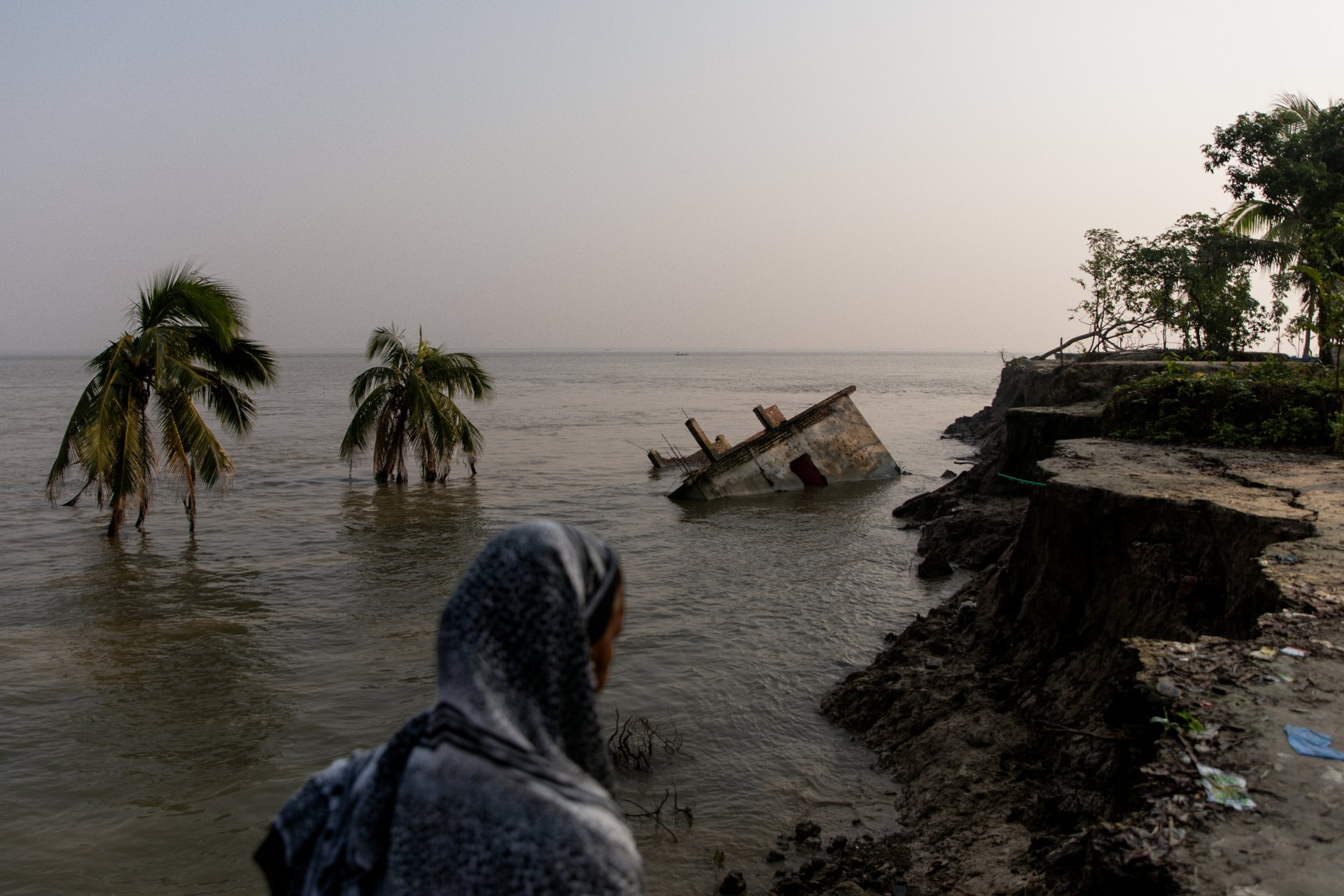

Ibrahim (centre) has lost his house twice due to land erosion caused by the Padma river. As well as countless homes, many other buildings and services have been engulfed, including several schools, mosques, the hospital, two health clinics and parts of a bazaar.
As well as the structural devastation, this heavy tropical rainfall also contributes to the breeding success of Aedes aegypti mosquitoes and the spread of dengue, particularly in areas where healthcare provision is limited.
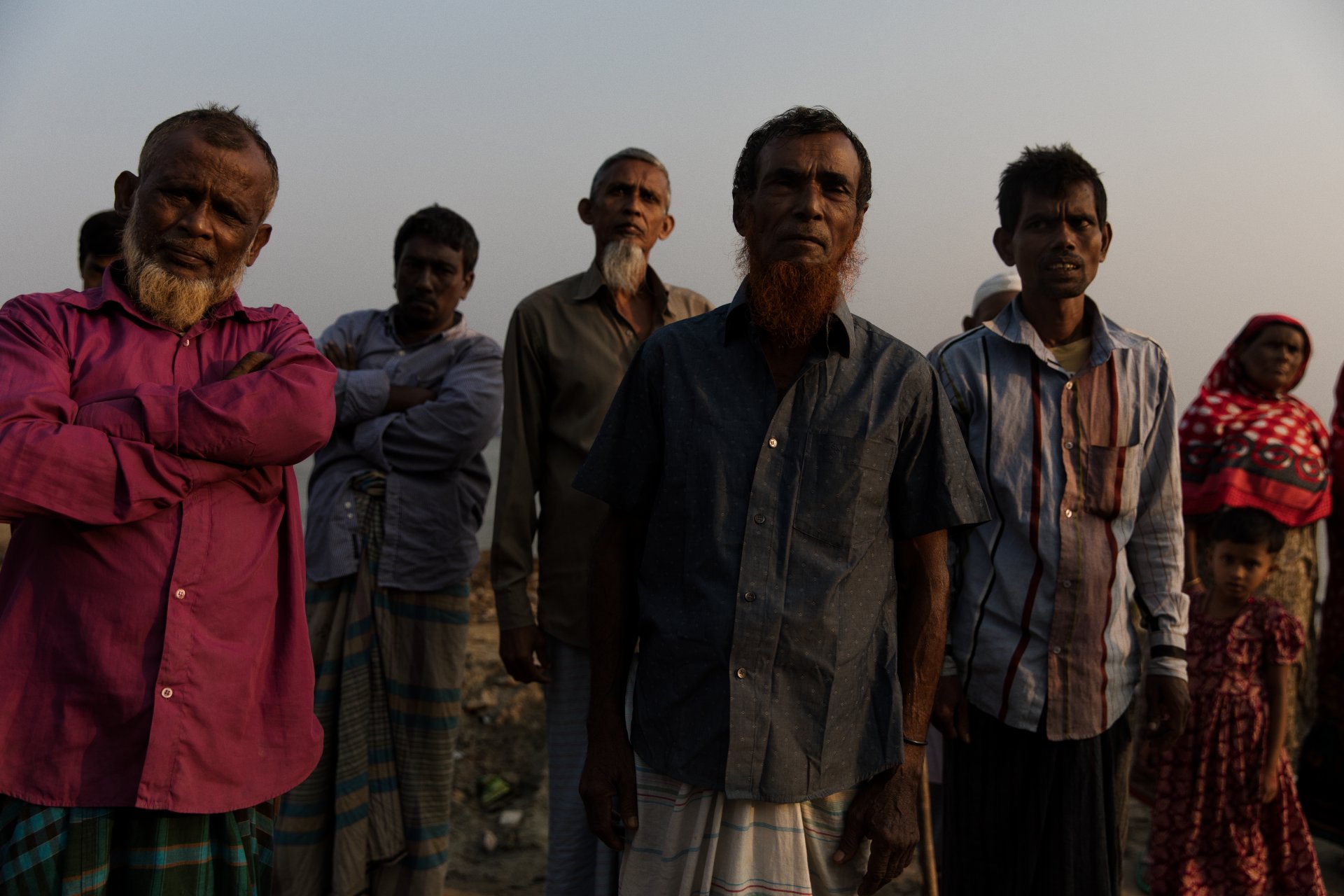

The streets of Uttara, a suburb of Dhaka that has expanded rapidly over the past 20 years, are sprayed with insecticide to exterminate mosquitoes during an outbreak of dengue. This process of 'fogging' is unlikely to have much success in preventing an outbreak from spreading as it targets only adult mosquitoes, leaving eggs and larvae unharmed.
Despite its limited efficacy, the fumigation process gives communities a sense of reassurance that some effort is being made to protect them.
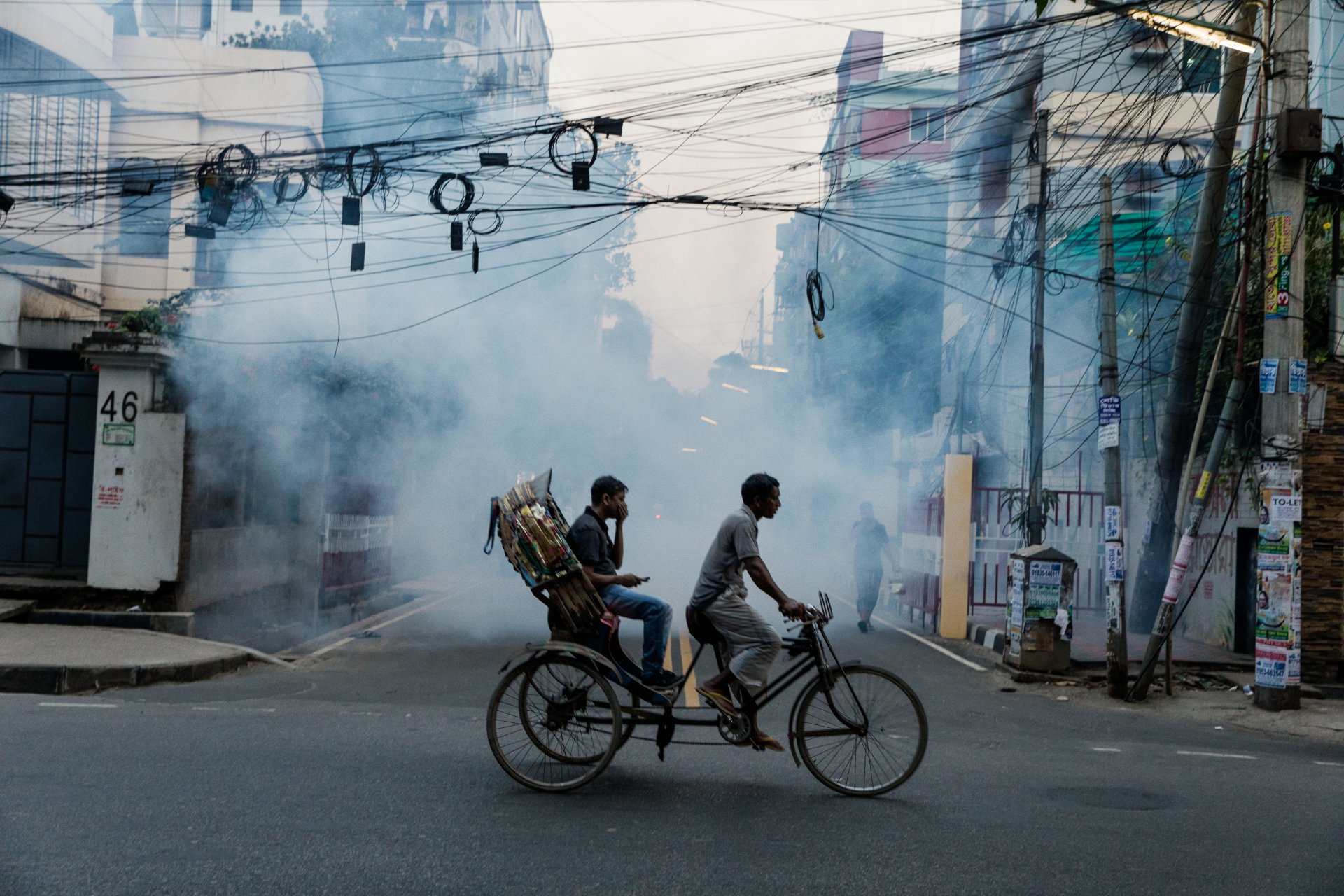

Sohid, 45, is admitted at the Dhaka Medical Hospital, as the doctors suspect he has dengue. He suffers from stomach pain (which can signal a haemorrhage), vomiting and motion problems.
'I don’t have any money left,' says his wife, Shenuwar. 'I gave it all for the bed and I have spent so much the last three days for the tests.' The previous week their daughter was also hospitalised with dengue. They struggle to pay for the baksheesh (bribe) required for medical care even though basic public health services are meant to be free in Bangladesh.
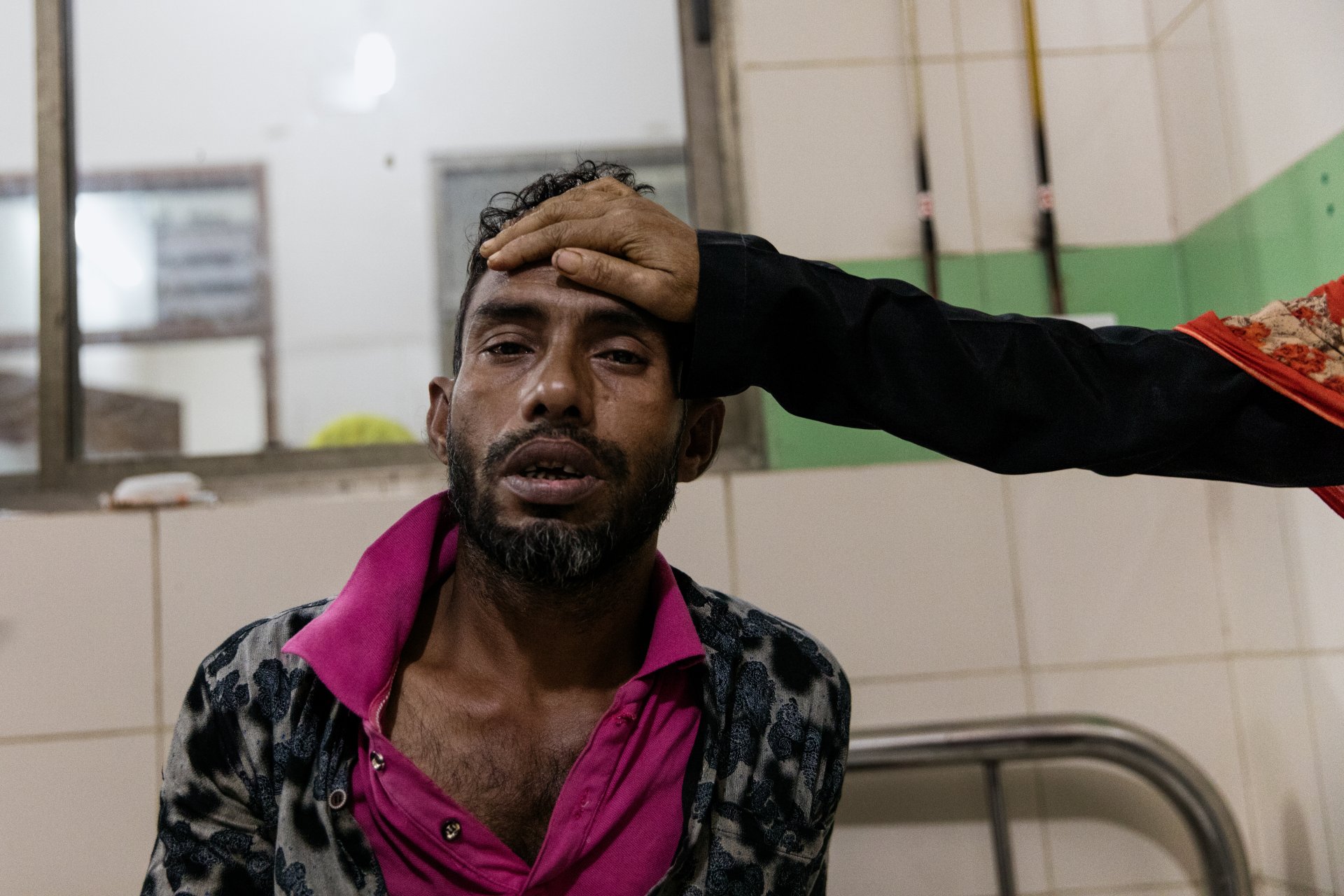

Meena is tearful. Her eight-year-old son Maruf died a week ago from dengue. 'There was blood coming out of his eyes, his ears, his mouth. Blood, blood, blood,' she recalls painfully. 'No father should carry his dead son’s body, and no mother should grieve her child,' adds the father. 'Nobody should die of this disease, there should be an initiative to cure it as soon as possible.'
In October 2018, almost 7,450 cases had been reported in Bangladesh, making it the deadliest outbreak since the first recorded epidemic in 2000.
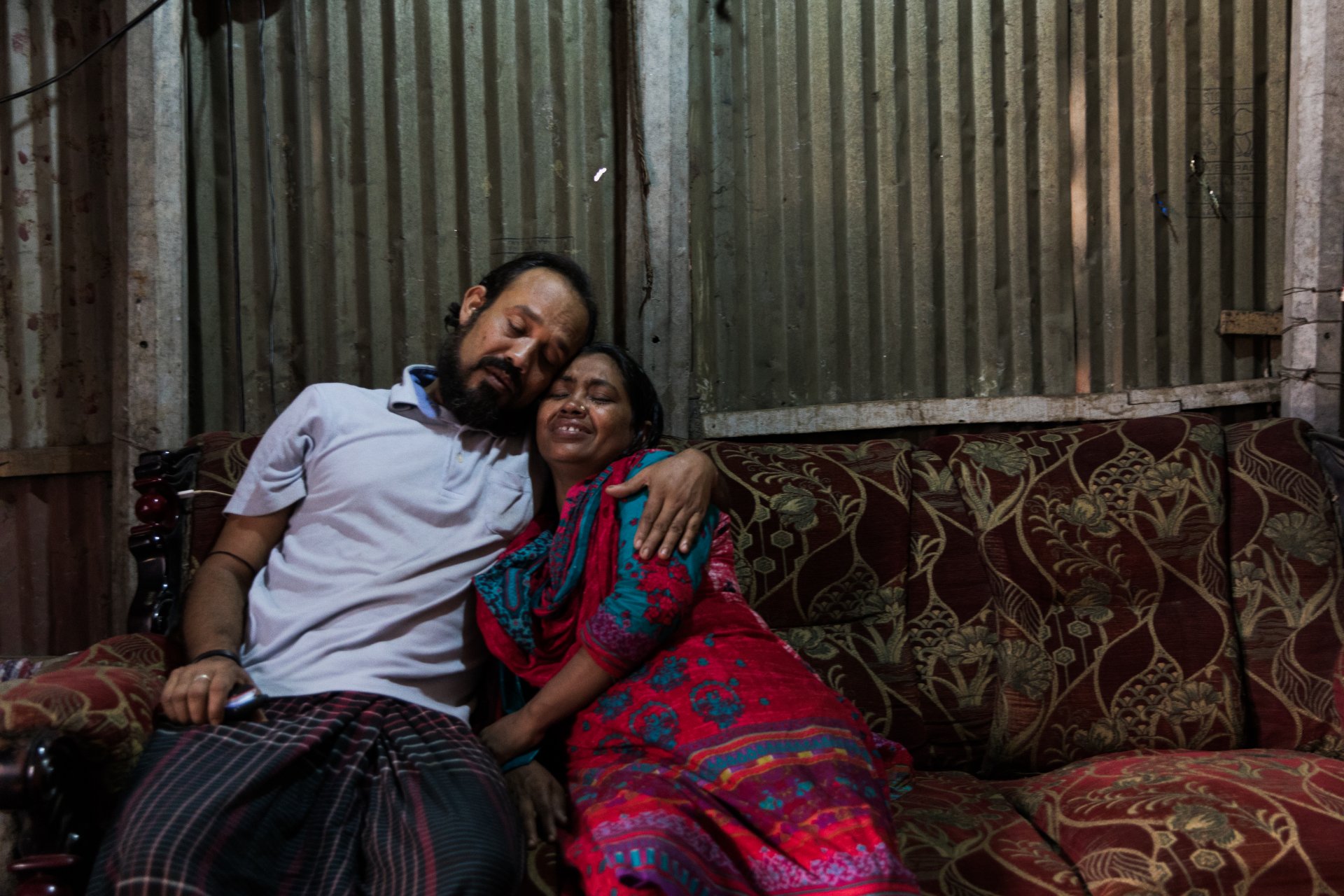

On the Buriganga river at Keraniganj port, boat drivers who take people across the river during the day sleep on their boats at night protected by mosquito nets. But although the Aedes aegypti and Aedes albopictus mosquitoes that carry and transmit dengue are most active around sunrise and sunset, they predominantly bite during the daytime when the boat drivers are most exposed.
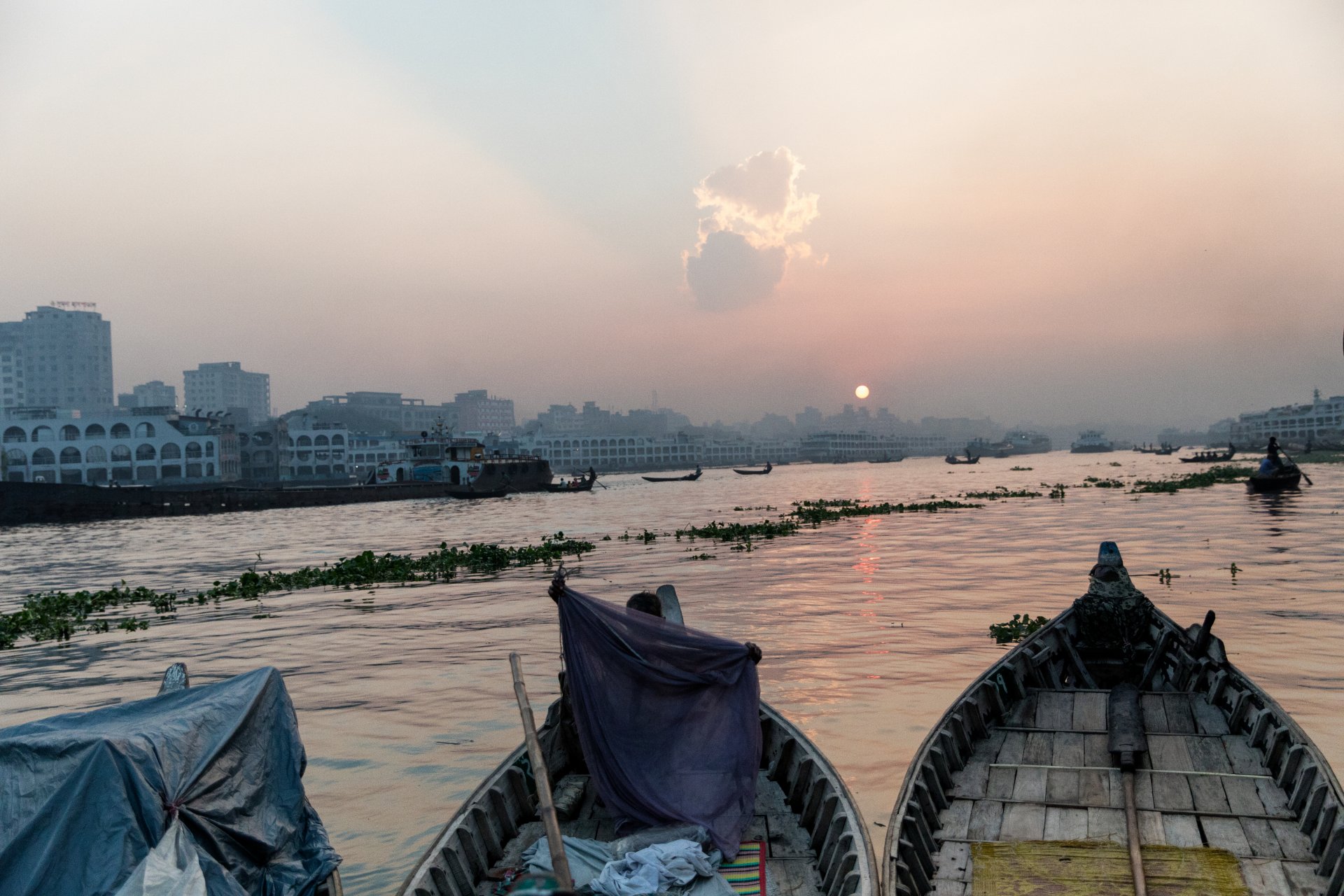
Tourism can breathe life into remote nations but can also bring problems when travellers accidentally transport dengue-carrying mosquitoes from neighbouring islands.
Zika may be a diminishing threat in Brazil, but the impact on community trust in health services, crucial for preventing and treating dengue, is still being felt.
Why the success of a public health programme to combat dengue on an Indian Ocean territory could have implications for mainland Europe.
Each year the Wellcome Photography Prize Commission focuses on a new health challenge.
Adrienne is a Canadian photojournalist documenting social and environmental issues. Currently based in the Central African Republic, she has covered stories in Central America, Central Africa and the Middle East. Adrienne is a member of the Collectif Item, which takes on long-term projects that document our world.
Award-winning photographer Siân Davey has been commissioned for the Wellcome Photography Prize 2020, which explores the theme of mental health. Her forthcoming work will intimately explore the link between depression, anxiety and families living in poverty.